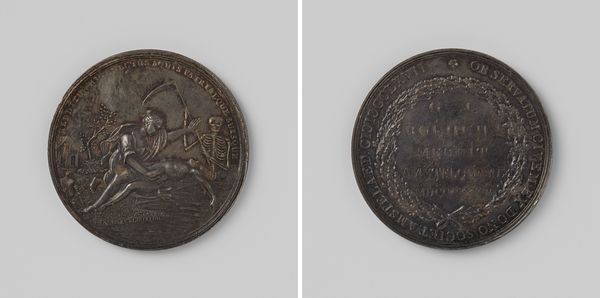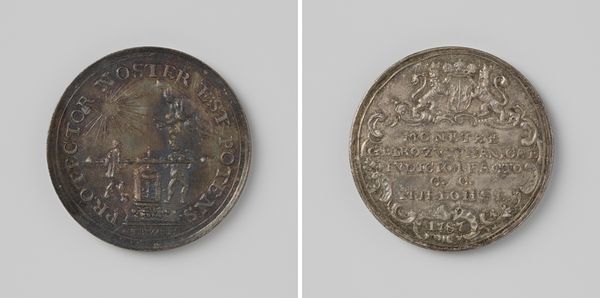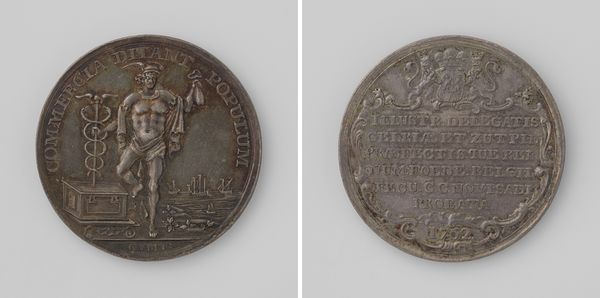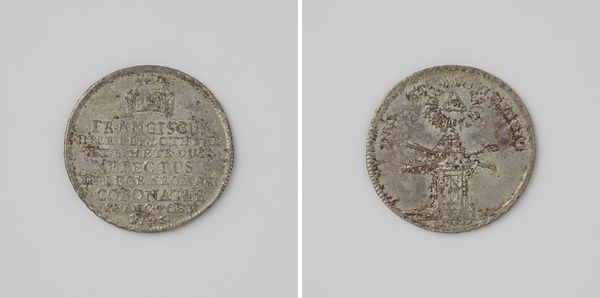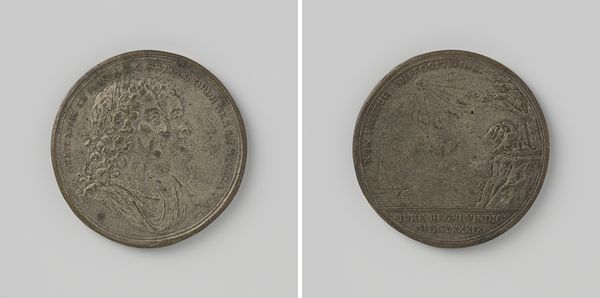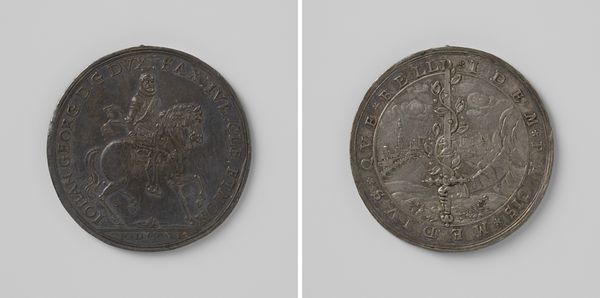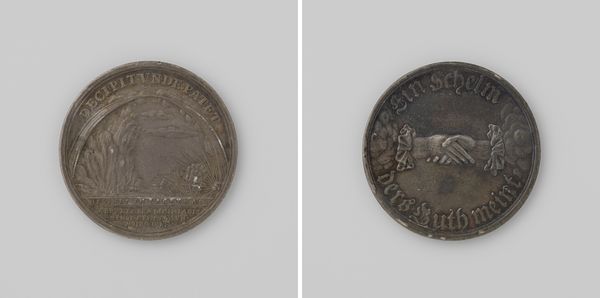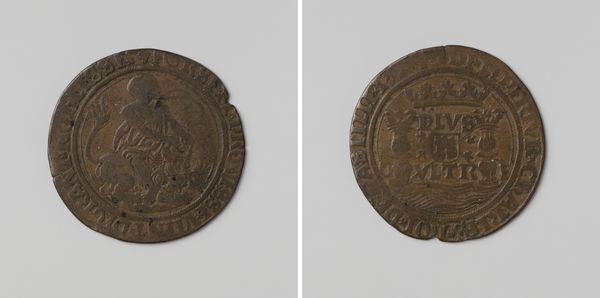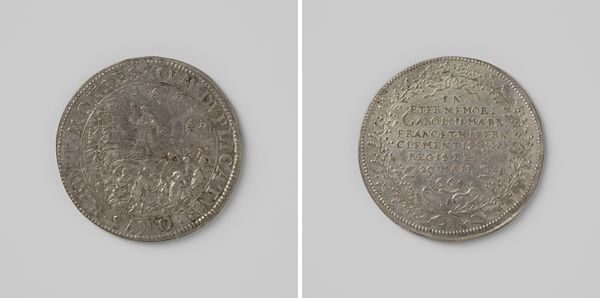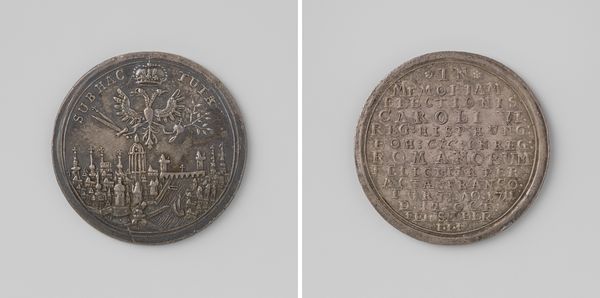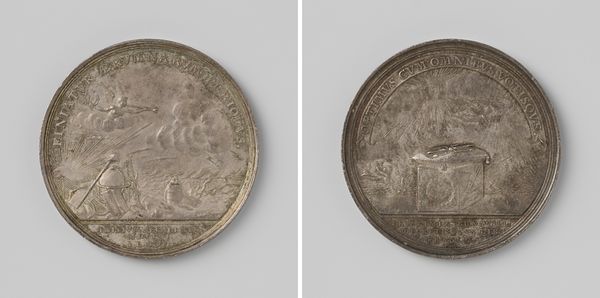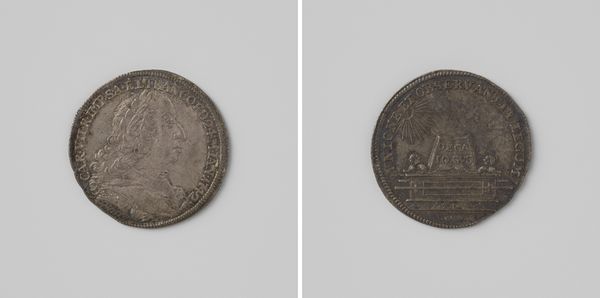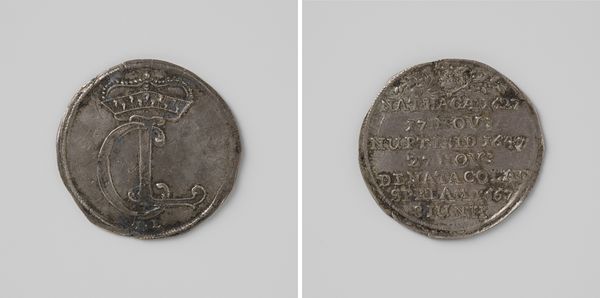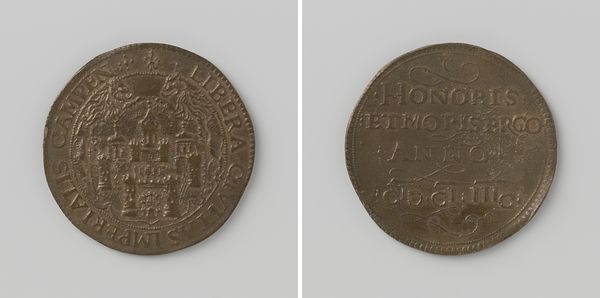
print, metal, engraving
#
neoclacissism
# print
#
metal
#
history-painting
#
engraving
Dimensions: diameter 3.2 cm, weight 10.95 gr
Copyright: Rijks Museum: Open Domain
Editor: This object is the "Peace of Hubertusburg, Medal Struck by the City of Frankfurt," made of metal in 1763 by Johann Leonhard Öxlein. It is quite small and unassuming. The images and text seem deeply engraved, creating a tangible historical presence. How would you interpret the meaning of such a commemorative object? Curator: Considering its context, it speaks volumes about how political events are translated into popular memory. Minted shortly after the Seven Years' War, this medal reflects Frankfurt's attempt to solidify and broadcast a narrative of peace, right? Notice the idealized city depicted under a radiant symbol, versus the inscription on the other side. Who was the intended audience and what message were city officials hoping to send? Editor: I suppose they were hoping to project stability, to remind the citizens that Frankfurt was persevering. So it’s less about individual artistry and more about its role in civic self-representation? Curator: Precisely. The medal operates as a form of public art, reinforcing a specific political ideology. Consider how the act of distributing such medals – likely to dignitaries and prominent citizens – shapes perceptions and sustains particular interpretations of historical events. Editor: It's fascinating to think of something so small carrying so much weight – political and symbolic. I never considered how simple, commemorative pieces like these played such a crucial public role! Curator: And consider that this medal exists today, centuries later. How does the medal's survival in museum collections, its study, shape modern understandings about this moment of history and Frankfurt's aspirations? Editor: I hadn’t thought about it like that, this is definitely a different way of viewing a piece, through socio-political context rather than as merely an aesthetic experience. Thanks for opening my eyes.
Comments
No comments
Be the first to comment and join the conversation on the ultimate creative platform.
